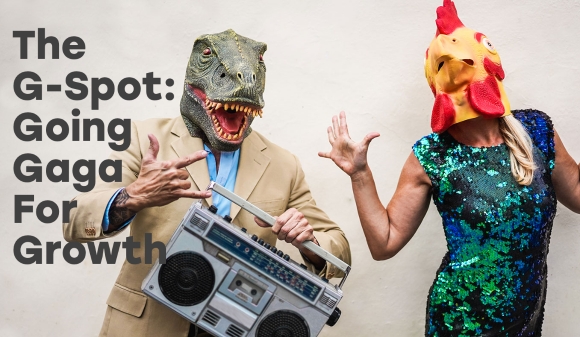The G-Spot: Going Gaga For Growth

 Value investors: Read it and weep. Since 2010, value stocks have not only underperformed the overall market, they’ve been trounced by growth-oriented stocks. For example, the Russell 1000 value index rose 87 per cent during this period compared with the general market which gained 171 per cent. Value performance looks even worse when compared to that of fast-growing companies with high price-to-book ratios, one classic measure of value. Since January 2020, high-flyers have risen 20 per cent or more vs. a drop of over 10 per cent for the value clan. Has the esteemed “value premium” gone into quarantine? And, if so, will we see it again in our lifetimes?1
Value investors: Read it and weep. Since 2010, value stocks have not only underperformed the overall market, they’ve been trounced by growth-oriented stocks. For example, the Russell 1000 value index rose 87 per cent during this period compared with the general market which gained 171 per cent. Value performance looks even worse when compared to that of fast-growing companies with high price-to-book ratios, one classic measure of value. Since January 2020, high-flyers have risen 20 per cent or more vs. a drop of over 10 per cent for the value clan. Has the esteemed “value premium” gone into quarantine? And, if so, will we see it again in our lifetimes?1
For classic value investors, who screen equities based on such metrics as low P/E, P/S, P/B scores, estimates of intrinsic value, wide moats and generous margins of safety, the long-term outperformance of fast-growing companies, some with no profits, is a hard pill to swallow. They’ve watched the plain vanilla Exchange-Traded Funds (ETFs) based on the S&P 500 soar thanks to incumbents like the AFATMANs—namely, Alphabet, Facebook, Amazon, Tesla, Microsoft, Apple, and Netflix while their own holdings in financials, consumer staples, industrials, energy and the like have languished like wallflowers at the high school dance.
Clients of valued-oriented wealth management and hedge fund firms have been the unlucky recipients of several mea culpa memos promising brighter days ahead and counselling fortitude. Other, formerly top firms have simply thrown in the towel. Philadelphia-based AJO folded its tent after 30 years, returning more than $10 billion to its investors explaining, “our recent performance sucks…our record over most of the last five years has been so sucky that even if we outperformed mightily over the next five, we would still have—at best—a drab return looking back over those 10 years.”2
But, as the saying goes, “it ain’t over until the fat lady sings”. There are good reasons—beyond the simple bandwagon effect—for paying up for high-growth companies, just as there are increasing signs of life for value stocks.
Up, Up, And Away
Assigning a fair price to growth stocks is not a simple matter. It’s particularly difficult when a company pays no dividends and when interest rates are at rock bottom. Since valuations of future corporate earnings are divided by interest rates, a low numerator gives future earnings streams a pop. According to Sébastien Lavoie, chief economist at Laurentian Bank Securities, “The cost of money embedded in prevailing interest rates is about zero, so one can pay just about anything for future earnings.”3
Federal monetary stimulus and the purchase of corporate bonds, as well as direct support payments to businesses and individuals, has kept the economic system well lubricated throughout the pandemic. Excess cash—whether from institutional buyers or retail investors using Do-it-Yourself (D.I.Y.) trading apps like Robinhood, has found its way into the equity and bond markets. However, because of historically low bond yields, of the two, stocks are favoured, particularly those of companies benefiting from COVID-19, such as Zoom, Netflix, Apple, Salesforce, Shopify, Facebook, Google. Success begets success as even the timid watch prices double or triple and capitulate to join the party thus driving prices even higher.
These mega cap winners are dynamic companies with attributes leading to long-term success. Except, with such high multiples, much of their future growth is “baked into the cake”. Investors are de facto agreeing to accept lower returns in the future. It’s helpful to remember there was a time when IBM, Walmart, GE, Xerox, and even Polaroid were considered tech darlings. Investors believed no price was too high to pay because their valuations would continue to rise. Eventually, their growth tapered, missteps were made, disruptions occurred. These things happen all the time so why should this time be any different?
Further, in a low growth or deflationary world, a company with steady growth and a decent runway to continue the pace into the future is worth a lot more than a mature one, so investors are willing to pay up. After all, value trap equities are a just a different, less glitzy, kind of risk.
V-Shaped Recovery
But, wait a sec. Investors have thrown value stocks under the bus before and it’s always ended in tears. Over the long-term value has outperformed. The question is: Will it do so again—and when might that blessed day arrive? Interest rates are expected to remain muted for the foreseeable future, which drives investors to make riskier bets so they can earn more than 1 per cent before inflation. This makes equities more valuable. However, since the announcement in early November from Pfizer of a reliable COVID-19 vaccine, value is starting to firm up in such sectors as financials and energy. Investors are forward-looking and many expect a cyclical recovery in 2021 as economic scars begin to heal.
At the same time, many of the mega cap names (FAANMG) are on a downtrend, making lower highs, and leading some technical analysts to predict a price breakdown. There is valuation risk for high-priced equities because, at some point, these mega-caps will reach the end of their growth capture and their valuations will begin to reflect this with a price reset. No one knows when this will occur. In the meantime, well-capitalized companies with wide moats and relatively reasonable valuations will thrive. The slump in value equities may reflect a cyclical, not secular trend, argues George Athanassakos, professor of finance at Ivey Business School, University of Western Ontario in a recent article in The Globe and Mail.
Regret Minimization Strategy
For those readers who hew closely to the tenets of value investing but wish to minimize regret at missing out on the action, one strategy is to take a small position, either directly or through an ETF or mutual fund, in some of the high-flyers. Future returns may be muted but, then again, they may be stratospheric. Value investing sometimes seems like a religion and those who diverge from it may feel like apostates. A happy compromise can also be found in investing in growth stocks at reasonable valuations. Google, Microsoft, and Facebook are a few that come to mind, and leave the Teslas and Amazons to others. In the words of Robert Arnott, chairman of Research Affiliates, “In investing, what is comfortable is rarely profitable.”
Rita Silvan, CIM is a finance journalist specializing in women and investing. She is the former editor-in-chief of ELLE Canada and Golden Girl Finance. Rita produces content for leading financial institutions and wealth advisors and has appeared on BNN Bloomberg, CBC Newsworld, and other media outlets. She can be reached at rita@ellesworth.ca.
- https://www.economist.com/graphic-detail/2020/09/19/the-age-old-strategy-of-buying-cheap-shares-is-faltering
- https://www.wsj.com/articles/our-recent-performance-sucks-heres-your-10-billion-back-11603461621
- https://www.theglobeandmail.com/investing/globe-advisor/advisor-stocks/article-low-interest-rates-create-new-relationship-between-stocks-and-bonds/

